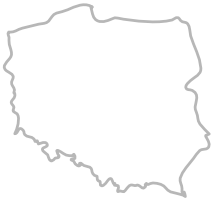
 Tools for the central management of
Tools for the central management of higher education in Papua New Guinea

 Tools for the central management of
Tools for the central management of Launch of National Online Selection System
On 12th December 2017 Minister of Science, Higher Education and Technology Pila Niningi officially launched
a national electronic system for admission, verification, and selection of higher education candidates.
We signed a contract with DHERST (Department of Higher Education, Research, Science and Technology of Papua-New Guinea) and then developed the system. The implementation of the system was preceded by training sessions and workshops for selectors – officials responsible for selecting candidates for higher education.
For Papua New Guinea it is the first online selection system. Until recently the whole process was performed manually. It was time-consuming and labour-intensive work which did not guarantee that all suitable candidates are allocated to a study program. The whole process of selection and recruitment of new students took over three weeks to complete. In comparison, in December 2018 selection conducted via the online system took just 20 seconds.
The basis of the National Online Selection System is an algorithm which compares candidates’ parameters, for example exam results, with criteria set by individual universities. As a result of analysis the system generates a list of most suitable candidates. The system ensures the transparency of the selection process, which leads to equal chances for all candidates.
Thanks to the online selection system the higher education institutions (HEIs) will never miss out on a good candidate. But the main beneficiaries of the system are school leavers. Not only will they quickly find out if they have been accepted, but they will also be assured that the selection process was fair and unbiased.
The system is a perfect example of how modern technological solutions can effectively support the functioning of a university. The system will be used by all 34 higher education institutes (HEIs) in Papua New Guinea. Minister Niningi added that the system will enable the ministry of science to save up to 5 million kina. He also emphasized that the system will provide equal opportunities for all high school graduates wishing to enter a university.
Delivery of Higher Education Loan Program
On May 15th 2020, James Marape, the Prime Minister of Papua New Guinea launched the Higher Education Loan Program (HELP). The project aims to provide higher education students in the country with the opportunity to obtain a preferred loan (with no interest and limited capital indexing) to cover the costs of the tuition, board and accommodation. Repayment of the loan would commence when students commence work and reach a certain revenue threshold. HELP would be available to all the students in tertiary education from single-year certificate programmes through to three-year diploma programs to full bachelor and postgraduate programmes.
PCG Academia delivered within two months an online HELP module based on Uni10, a student-centred higher education management system. The software allows SDOs to issue the students' credentials, confirm their identity and oversee the signing of the loan contract. Students have to check the data, run loan simulation and familiarise themselves with the contract before applying for the loan. Loan officers at DHERST then consider the applications and approve the contracts. Currently there are almost 200 000 accounts in the HELP system for all students who became eligible for Higher Education in the country after 2012.
Integration of National Online Application System
The National Online Application System (NOAS) which is running in PNG for the second year features full integration with the STAT-P registration system. STAT-P is the exam required by two PNG Universities as an additional requirement for their candidates.
Around 5000 PNG students take STAT-P every year, most of them are graduates from secondary schools. In the past, universities found it difficult to match the STAT-P exam takers with the school leavers’ data, because of the lack of a universally recognised I.D. number in the country.
In 2019 we proposed the integration of NOAS with the STAT-P registration module based on the shared use of School Leaver Numbers. The integration was agreed in May and implemented within June-July. The application was launched on August 21st. Within the first five weeks (with 4 more weeks remaining) 5000 students had used the integration.

 Hon. Pila Niningi
Hon. Pila Niningi 